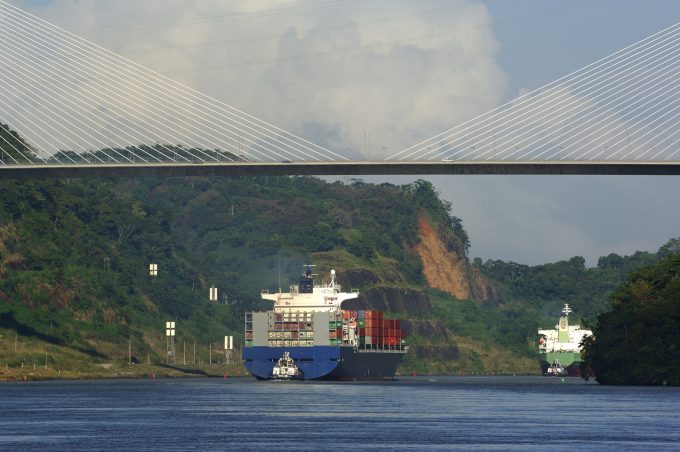Liners unveil Asia-Europe FAK price hikes to arrest steady rate decline
Container shipping lines are looking for a hike in Asia-Europe spot freight rates, announcing a ...

The intense battle between US west and east coast ports for Asian imports is being won on the Atlantic seaboard, despite ocean freight rates, according to Drewry.
The shift in momentum from the second half of 2016, following the opening of the enlarged Panama Canal, has continued apace, said the consultant.
Drewry said that according to Piers data, which only records US traffic, January and February volumes from Asia to the US east coast were up by 4%, year-on-year, to 760,000 teu, with Gulf port throughput leaping by 32% to 82,000 teu during the period.
This compares with a 9% throughput drop in the two months, to 1.5m teu, for US west coast ports.
Moreover, the accelerated growth on the east coast has supported a widening of the rates gap, with, for example, Drewry’s World Container Index (WCI)at the end of March recording a ‘premium’ of $1,400 per 40ft for Shanghai-New York, compared to the Shanghai-Los Angeles rates.
“It had been expected that the advent of larger ships on the all-water route would reduce the rate differential to make it a more attractive option compared with draying goods overland from the west coast,” said Drewry.
It noted, however, that for now carriers are “able to cash in on the route at the same time as making cost savings by introducing larger ships”.
Drewry said it expected shippers of just-in-time products, such as car parts or high-value electrical goods, where transit time is especially critical, would continue routing via west coast ports.
But it said it remained to be seen how much of a rate differential less time-sensitive cargo, such as furniture and clothing, would be able to absorb before shippers switched back to routing via the west coast.
In terms of the alliance reshuffle’s impact on Asia-US east coast route, Drewry said it did not expect any immediate impact, as forward schedules suggest that capacity will be only 1% higher than a year ago. Furthermore, the resumption and upgrading of the independent services offered by Israeli carrier Zim to match the alliance offerings will not commence until mid-April.
However, on the US west coast routes, Drewry calculates that the new alliance structures will hike headhaul capacity by some 4%, compared with a year ago.
Drewry has previously cautioned that there could be a downward threat to transpacific rates from non-alliance affiliated carrier Zim, which will launch its pendulum (ZMP) service this month, deploying 14 4,500 teu ships, as well as from new services offered by Hyundai Merchant Marine (HMM) and from its South Korean compatriot and liner start-up SM Line.
HMM will offer three standalone Asia-US west coast services operated by 6,600 teu vessels, while new entrant SM Line starts the first of its planned transpacific services deploying 6,500 teu vessels.
“The Asia-US east coast trade will outpace the US west coast route in 2017, and win the battle of the transpacific. New capacity will suppress rates on both lanes, but more so to the west coast, thus widening the price differential,” Drewry added.
Comment on this article